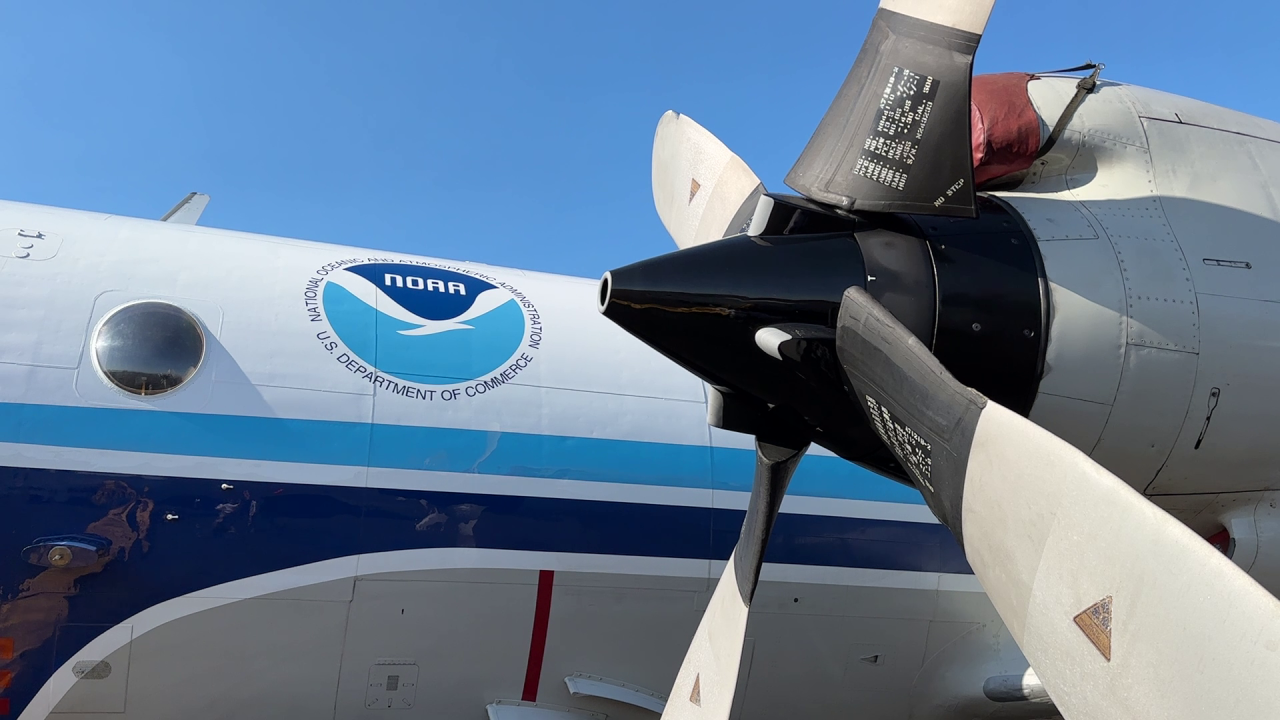TALLAHASSEE, Fla. (WTXL) — Flying into danger to keep you safe, the so-called "hurricane hunters" are getting ready to take their planes through tropical systems this hurricane season. The data they gather goes into computer models that help generate the most accurate predictions science can make.
“Imagine you’re going on a wooden roller coaster but you’re riding it through a washing machine.” That’s how Samantha Timmers described flying through a hurricane. She is a support meteorologist with the National Oceanic and Atmosphere Administration’s Aircraft Operations Center.

She and her crew take their WP-3D Orion Turboprop into storms as they’re forming and raging across the Atlantic. These planes are outfitted with meteorological instruments to gather data from inside the clouds.
"Every time we have one of these missions, it can be a little stressful, especially if we’re about to have a landfall that hits near us like Ian,” Timmers explained.
“Sometimes, they’re going out there and telling us whether a storm has even formed or not,” said Michael Brennan, Director of the National Hurricane Center in Miami. “They’re directly measuring how strong the storm is, how big it is, where the storm is located.”
All of that data is crucial when it comes to generating a storm’s forecast. As clouds build over the water, planes from NOAA and the U.S. Airforce will pass through at different levels. Crews will fly as low as 500 feet off the water's surface. They will also go all the way up to 10,000 feet. With improvements in forecasting tech, the national hurricane center is now extending their tropical weather outlooks from five to seven days.

“It’s just great to serve the people,” shared Major Steve Bichsel. He is a navigator with the 53rd Weather Reconnaissance Squadron at Keesler Air Force Base. "It’s very rewarding, Bichsel added. "I’m originally from Ohio, so never thought in a million years I’d be flying into hurricanes."
They will take their plane into storms. Those missions last 10-12 hours at a time. They will deploy to St. Croix or anywhere along the east coast. Gathering information for meteorologists on land, their missions can improve forecast accuracy by 20-30 percent!
They are mission Timmers says said proud to be part of. “We all know at the end of the day we’re doing it to help prepare people and help save lives. We’re all happy to do it.”
The air force planes carry a basic crew of five. NOAA also has a Gulfstream Jet that can fly up to 45,000 feet over a storm collecting data. The farthest they'll go on missions is about halfway across the Atlantic.




